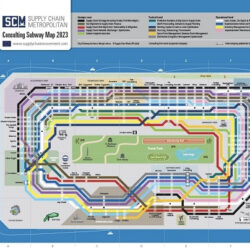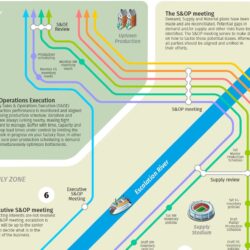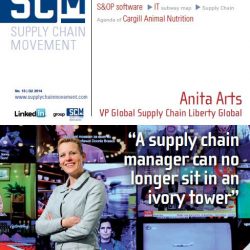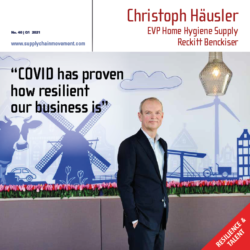Consulting Subway Map 2023: Thriving in a VUCA world

Just as in 2021, most European consulting firms did very well last year, with over 80% generating more profit in 2022 than in the previous year. When 29 consulting firms were asked what types of projects they had carried out, sales & operations planning (S&OP) scored the highest, followed by supply chain strategy projects and network optimization projects. Notably, there were several acquisitions in the consulting market over the past year, plus various proprietary software applications have been developed. All of these changes are visualized in the tenth edition of the SCM Consulting Subway Map of Europe.
By Martijn Lofvers
The supply chain consulting market appears to be going through a crucial period of transformation. Several consulting firms indicate that their project pipeline is full until this summer. However, there is still some uncertainty about the period beyond that as clients, manufacturing companies and retailers are waiting to see how the economy – and their business – will fare. Due to the war in Ukraine, companies really are operating in a volatile, uncertain, complex and ambiguous (VUCA) world. Consulting firms are no strangers to business uncertainty, though. “A consulting firm is never more than six months away from bankruptcy,” as the saying goes.
Proprietary software solutions
One striking new change is that supply chain consulting firms are developing their own software solutions. For example, firms like Chainalytics and EyeOn have proprietary forecasting-as-a-service solutions for companies like ABB and Akzo Nobel. Moreover, in collaboration with Professor David Simchi-Levi from MIT in Boston, Accenture has developed a software tool for supply chain risk management that calculates various scenarios at lightning speed when disruptions occur. Accenture implemented this digital twin solution in the space of just six months last year at a technology manufacturer in Ireland. Using heat maps, it analyses dependencies and risks to revenue streams and customers for around a thousand components from 15 of the company’s suppliers. Camelot carried out a similar project at a German manufacturer of fertilizers and crop protection agents last year. Meanwhile, Dutch firm IG&H Consulting has worked with Quantivate to develop a low-code software solution for forecasting and replenishment based on price optimization using machine learning algorithms.
Rather than developing your own software in-house, another option is to acquire a specialized firm. Global management consulting firm Kearney did just that when it acquired German company Optano, which specializes in supply chain optimization supported by artificial intelligence, in November 2022. When asked about their most compelling project of 2022, Argon & Co cited the application of artificial intelligence in the ForecastCore framework for a French global luxury goods brand. Based on internal figures such as point-of-sales data and external data such as the Covid index and social media statistics, the company used the tool to improve forecast accuracy per region by 10 percentage points on average, and by up to 38 percentage points for slow movers. Solventure also used leading external indicators to improve demand-planning forecast accuracy at client Solvay Specialty Polymers by 25 percentage points. Similarly, Höveler Holzmann Consulting implemented a forecasting tool at a German pet food manufacturer to share data between the purchasing department and suppliers in real time. And at global sporting goods retailer Decathlon, Citwell Consulting deployed a tool for modelling carbon costs and the impact of the new circular business model.
The tenth edition of the SCM Consulting Subway Map of Europe is based on information provided by the consulting firms themselves. A combination of the number of consulting projects completed, the market share by revenue for each specific area of advice, the size of the company and the degree of specialization determines whether a company gets its own subway station on the relevant line, thus visualizing the company’s proven expertise.
To be included on this subway map, a consulting firm must have offices in more than one European country or also on other continents. For each specific area of advice, the consulting firms were also asked to name the three competitors that they come up against most regularly when pitching for projects. The companies that named each other most often are located closest together on the map.









